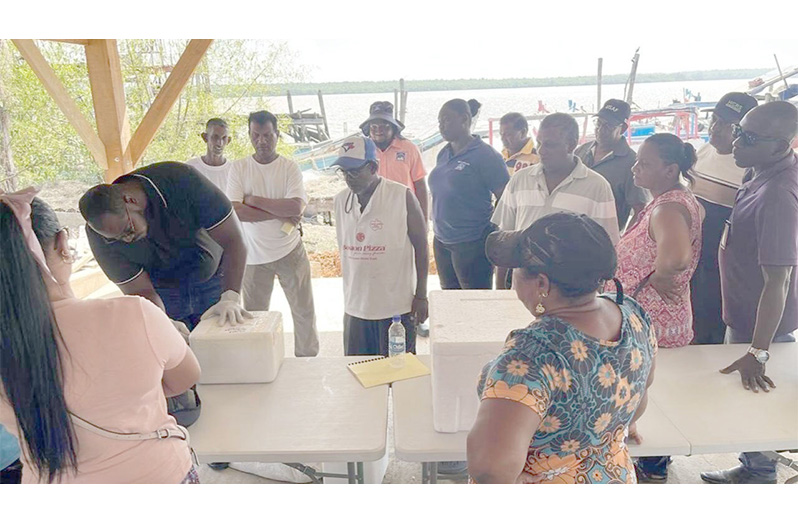Guyana’s small-scale seabob producers sharpen their food-safety skills
THE salty air of the Atlantic carries more than just the scent of the sea for the hardworking men and women of Guyana’s seabob industry.
Their livelihoods are intricately tied to this small crustacean that is a delicacy– locally and internationally. But ensuring that every ounce that is caught meets the high-quality safety and standard that the market demands is important as it journeys from the boat to our plates. Preparing the seabob itself is not easy.
“Cleaning shrimps [sic] does bore your fingers and people prefer to buy the freshly picked shrimp,” says Bhagmatie Omar, a fisher, vendor, and processor.
She explained that seabob is very delicate and has to be cleaned and sold quickly or kept frozen without the head. Handling it, she explained, is very difficult; “it is better when we wear gloves, masks, aprons, and long boots, because the process can damage our skin.”

Under the FISH4ACP initiative, funded by the European Union (EU) and the German Federal Ministry for Economic Cooperation and Development (BMZ), and implemented by the Food and Agriculture Organization of the United Nations (FAO), food-safety training and personal protective equipment (PPE) was provided to small-scale fishers of Three Door Koker and Rosignol, Region Five.
And it seems that the training has made improvements in the participants’ seabob icing and handling processes. The training emphasised crucial initial steps for maintaining catch quality and freshness from the moment it leaves the water.
Participants also gained a deeper understanding of food-safety hygiene, including environmental, physical and biological factors affecting seabob quality during its transit to consumers.
For many, they have learned simple yet effective strategies for minimising losses, which potentially increase their earnings and reduce waste.
The training provided clear guidance on best practices, empowering these dedicated individuals to handle seabob in a way that not only preserves its quality, but also ensures they use protective wear to protect themselves at all times.
Safina Iqbal, a vendor for over 25 years, who sells cleaned seabob at the Rosignol market on Fridays and Saturdays, said, “I’m getting accustomed to using PPEs. The gloves do make cleaning a bit harder, but they protect my hands from the water and ice.”
She added that the communal spirit is encouraging, “we buy catch from fishers and share among vendors so that everyone can have an income, and we are learning to do things together differently.”
Overall, strengthening the fishers,’ vendors,’ and processors’ ability to improve their practices will help them to be more competitive, enhance the appeal of their product and help them to access more lucrative markets.
Banmattie Vanbrook, former Chair of the Three Door Fish Cooperative and a fisher, vendor, and processor, reported that the training has helped her reduce post-harvest waste. She further noted a positive shift, with more vendors implementing improved storage and handling practices since the training.
Banmattie and other members are now seeking additional support for improved co-op management, which aligns with the next phase of the FISH4ACP Project launched to strengthen fish co-operatives.
With each newly acquired skill and commitment to this arduous sector, small-scale fisherfolk are becoming stronger links in the value chain. However, much more support is needed to ensure the unwavering spirit of the fishing community dedicated to this livelihood activity is sustained for future generations.



.jpg)








